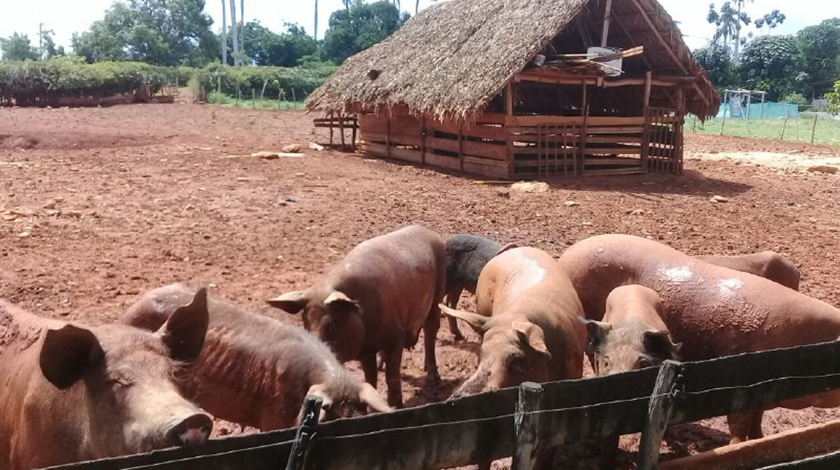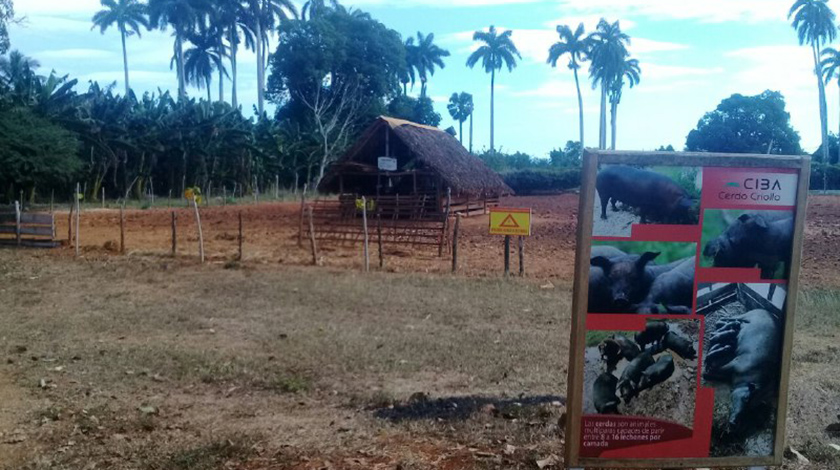
The Porcine Company in the province of Ciego de Ávila adopts strategies to obtain alternative foods that allow to recover the productions, destined to satisfy the demands of the national economy and the materialization of the monthly per capita of five kilograms of protein products.
Given the deficit of animal feed, the main cause of the decrease in pig farming, this entity promotes the contracting of waste from crops, industrial and processed food, Orlando Pérez Pereira, provincial delegate of the Ministry of Agriculture, said.
The use of natural resources such as the palm tree, whose management will be in charge of two brigades of palm topping, constituted in the municipalities of Florencia and Ciego de Ávila, when the safety and health conditions of the work required for its members area dded to this, he alleged.

In the province, 55 private producers are identified, who have a total of 803.8 hectares of land, 93.1 of which are cultivated with food and grains for the consumption of these animals; and the allocation to applicants is streamlined to stimulate productions, the manager argued.
The sowing of protein plants for direct consumption and processing is introduced in a liquid feed factory, the latter also supplied by the Pasture and Forage Station, the Bioplants Center and the Azcuba Sugar Group, as a result of the productive chains, he assured.
Pérez Pereira added that the assurances of raw materials to the aforementioned industry are maintained, with the capacity to produce 80 tons of liquid feed per day, supplied to the Company's units, including the feedlot, and to private producers.
In the course of the year 2021, 8 057 animals were introduced to the feedlot, with the use of liquid feed; and 19 tons of meat were delivered from pigs that reached an average weight of 52.7 kilograms in 96 days, he emphasized.
The Company is working on the creation of conditions for the silage of food and the recovery of eight sheds in the feedlot, where the animals are also fed with torula sacharomyces, he added.
We work with the pig producers who best take advantage of alternative technologies and in the training of the rest, in order to achieve their adaptation to the new circumstances to lessen the negative impact of the lack of imported feed, he mentioned.

The territory rescues the breeding of the Cuban Creole pig from experiences that demonstrate economic sustainability, ability to adapt to natural settings, resistance to diseases and climate change, as well as obtaining higher quality meats.
Yamilé Jiménez Peña, deputy director of the Bioaliments Research Center (CIBA), highlighted that the so-called "Chinese pig" constitutes a superior breed and does not require large investments, it can be achieved with the use of alternative foods obtained with local resources, although the conversion of meat is slower.

The scientific research Alternatives for feeding the Cuban Creole pig with the use of local resources, demonstrated the feasibility of earthworm humus for feeding the Cuban Creole pig in the pre-fattening stage, replacing up to 20 percent of conventional foods, the scientist held.
According to the results of the study, the animals that were fed the worm cast in the diet achieved an average daily gain similar to those that were fed with traditional methods.
The CIBA also develops a project that responds to the interest in obtaining descendants of Creole pigs and breeds such as Duroc, the latter characterized by rusticity, with virtues for the use of its meats in industry, superior performance to other lineages, and ideal to be complemented with other types.
